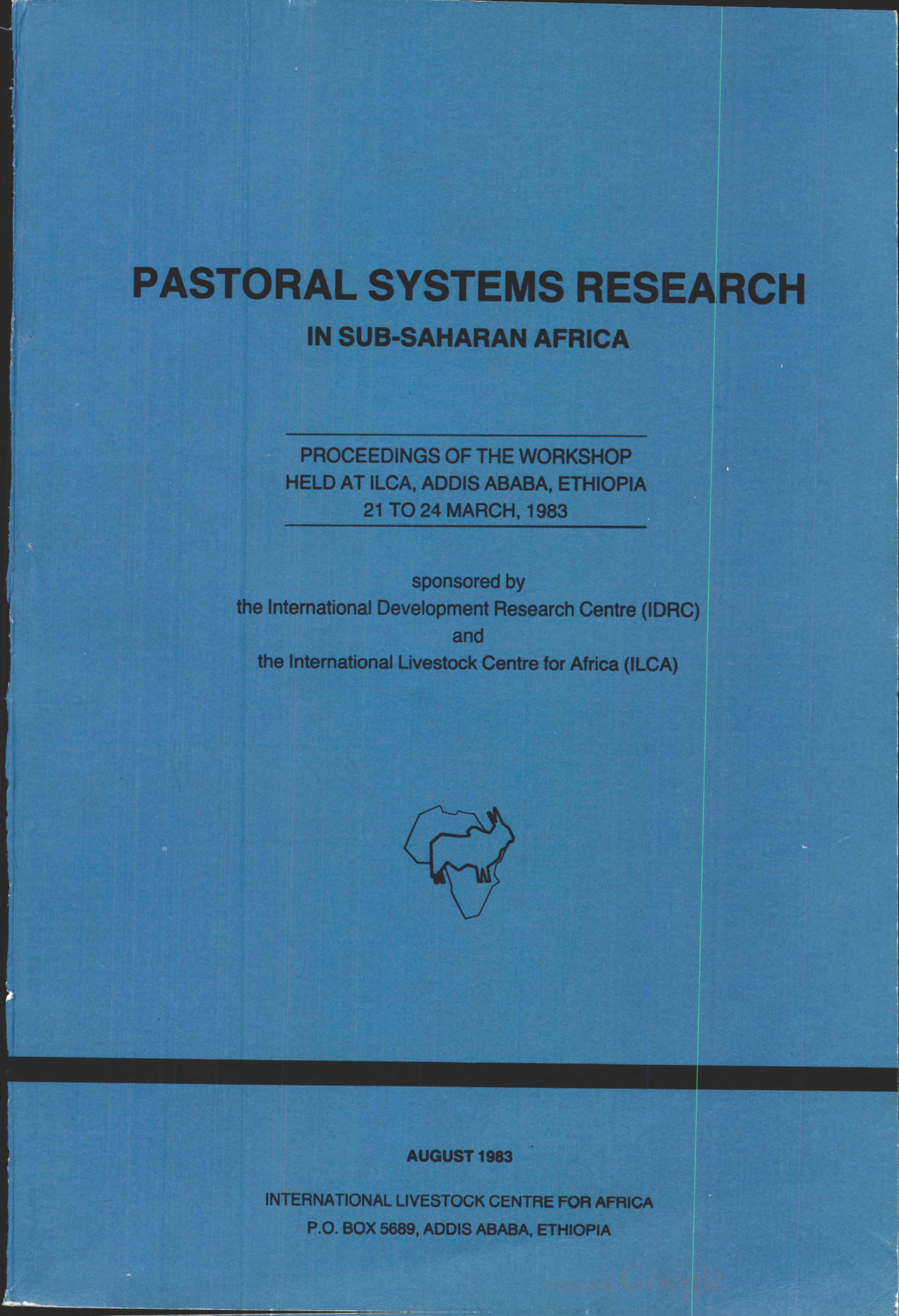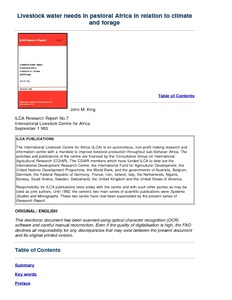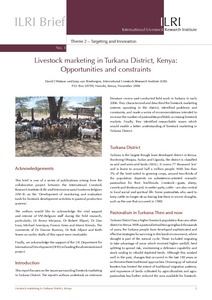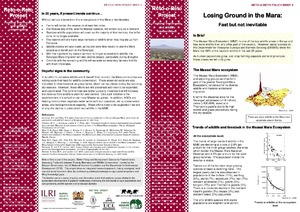Livelihood mapping and poverty correlates at a meso-level in Kenya
Les activities culturales dans le systeme agropastoral peul du Nigeria central
Examines the extent and methods of crop production in the Fulani agropastoral system in central Nigeria by analyzing cropping patterns, management techniques employed, and inputs to cropping such as labour, draught power & fertilizers, and output in terms of grain yield, energy and crop residues.
Les recherches du CIPEA en 1980
Presents and discusses ILCA's research on smallholder farming in the highlands, village sheep and goat production in the humid zone, cattle production in the subhumid zone, pastoral production in the arid zones of West Africa, range livestock production in eastern and southern Africa, and breed evaluation and herd modelling.
Les vegetations et les ressources fourrageres dans les systemes pastoraux
Discusses the aim of studies on vegetation & feed resources in pastoral systems, describing the collection & presentation of data in the descriptive phase; identification of constraints in the diagnostic phase; and analysis of the impact of selected variables or technical innovations on the systems' functioning, and the development of adapted technology in the experimental phase.
Lay perceptions of risk factors for Rift Valley fever in a pastoral community in northeastern Kenya
Background: Human behavioral factors have been found to be central in the transmission of Rift Valley fever.
Consumption of contaminated meat and milk in particular have been identified as one of the key risk factors for
the transmission of Rift Valley fever in humans. In pastoral communities, livestock is the main source of livelihood
from which many benefits such as food as well as economic and cultural services are derived. Zoonotic diseases
therefore have a great impact on pastoral communities livelihoods. However, lay perceptions regarding the
L'evolution du milieu
Describes techniques of long-and short-term measurements of changes in vegetation and feed resources in pastoral systems, with particular reference to sampling techniques and costs of the various methods.
Lay perceptions of risk factors for Rift Valley fever in a pastoral community in northeastern Kenya
Consumption of contaminated livestock products is one of the risk factors for the transmission of Rift Valley fever (RVF) in humans. In pastoral communities, livestock is the main source of livelihood providing nutritional, economic and cultural services hence zoonotic diseases tend to be more prevalent in such communities. An understanding of the lay perceptions regarding the transmission of zoonoses can help institute effective interventions. A qualitative study was carried out in Ijara district in Kenya to investigate the lay perceptions of RVF transmission.
Livestock water needs in pastoral Africa in relation to climate and forage
Discusses livestock water needs and the variation of water dependence in dif. circumstance, mentioning body water functions; physiological aspects of water balance; channels of gain & loss; and factors affecting water balance, particularly energy production, thermoregulation and water availability. Examines energy and water use, as well as water & livestock development in pastoral areas of Africa.
Livestock marketing in Turkana District, Kenya: opportunities and constraints
This report focuses on the issues surrounding livestock marketing in Turkana District. The report 's authors undertook an extensive literature review and conducted field work in Turkana in early 2006. They characterized and described the livestock marketing systems operating in the district, identified problems and constraints, and made a series of recommendations intended to increase the number of pastoralists profitably accessing livestock markets. Finally, they identified researchable issues which would enable a better understanding of livestock marketing in Turkana District.
Losing ground in the Mara: fast but not inevitable
The Maasai Mara Ecosystem (MME) is one of the key wildlife areas in Kenya and has more wildlife than any other part of the country. However, aerial surveys by the Department for Resource Surveys and Remote Sensing (DRSRS) show that Mara lost 60% of it’s resident wildlife in the last 25 years. As human populations grow, and crop farming expands and land privatizes, these pressures will only grow.









